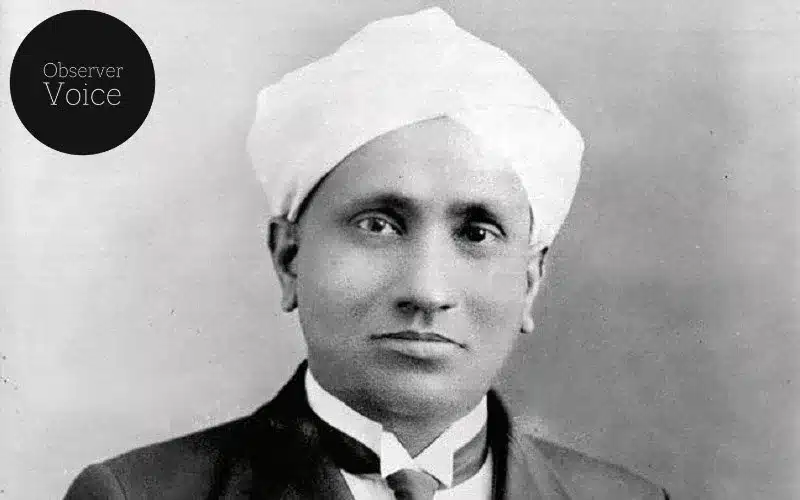Illuminating Science: The Revolutionary Discoveries of C. V. Raman

C. V. Raman was an Indian physicist and Novel laureate. He is also known as Sir Chandrasekhara Venkata Raman. In 1930, he received Nobel Prize in Physics He is best known for his discovery “Raman Effect”, or the theory related to the scattering of light. In this, he showed that when light travels from a transparent material, some of the deflected light changes its wavelength. His work and research which brought him the Nobel prize:
When light meets particles that are smaller than the light’s wavelength, the light spreads in different directions. This occurs, for example, when light packets – photons – encounter molecules in a gas. In 1928, Sir Chandrasekhara Venkata Raman discovered that a small portion of the scattered light acquires other wavelengths than that of the original light. This is because some of the incoming photons’ energy can be transferred to a molecule, giving it a higher level of energy. Among other things, the phenomenon is used to analyze different types of material.
Life and Career
C. V. Raman was born on 7 November 1888, in Tiruchirapalli, Madras. His father Chandrashekar Ramanathan Iyer was a lecturer in Mathematics and Physics. He was an intelligent and brilliant student since his early childhood. At the age of 11, he completed his Matriculation and Intermediate, at the age of 13. In 1902, He joined the Presidency College, where he earned his B. A degree and he was the only student who received the first division. In 1907, he has done his M.A in physics from the same college and broke all the previous records.
In 1907, He appeared and qualified for the Indian Finance Service, achieving the first position in the entrance examination. He went to Kolkata and joined as Assistant Accountant General. But in his free time, he went to the laboratory to do research at the Indian Association for Cultivation of Sciences.
In 1917, he left his government job and joined the University of Calcutta as the first Palit Professor of Physics. On 28 February 1928 C. V. Raman discovered a novel phenomenon of light scattering, which they called “modified scattering,” but more famously known as the Raman effect. The day is celebrated by the Government of India as the National Science Day every year.
After 15 years in Kolkata, he became a Professor at the Indian Institute of Science in Bangalore from 1933-1948. After his retirement, in 1948, he established his own Research Institute and became the director of the Raman Institute of Research in Bangalore. He died on 21 November 1970, in Bangalore, India. Every year in India National Science Day is celebrated on 28 February, to celebrate the discovery of the Raman effect.
Awards and Legacy
In 1930, He received Nobel Prize in Physics, C. V. Raman was the first Asian to receive the Prize in Physics. In 1954, He was awarded Bharat Ratan by the Government of India. In 1957, he was awarded the Lenin Peace Prize.
Read More: 5 November: Remembering Bhupen Hazarika on his Punya Tithi
Observer Voice is the one stop site for National, International news, Sports, Editor’s Choice, Art/culture contents, Quotes and much more. We also cover historical contents. Historical contents includes World History, Indian History, and what happened today. The website also covers Entertainment across the India and World.

